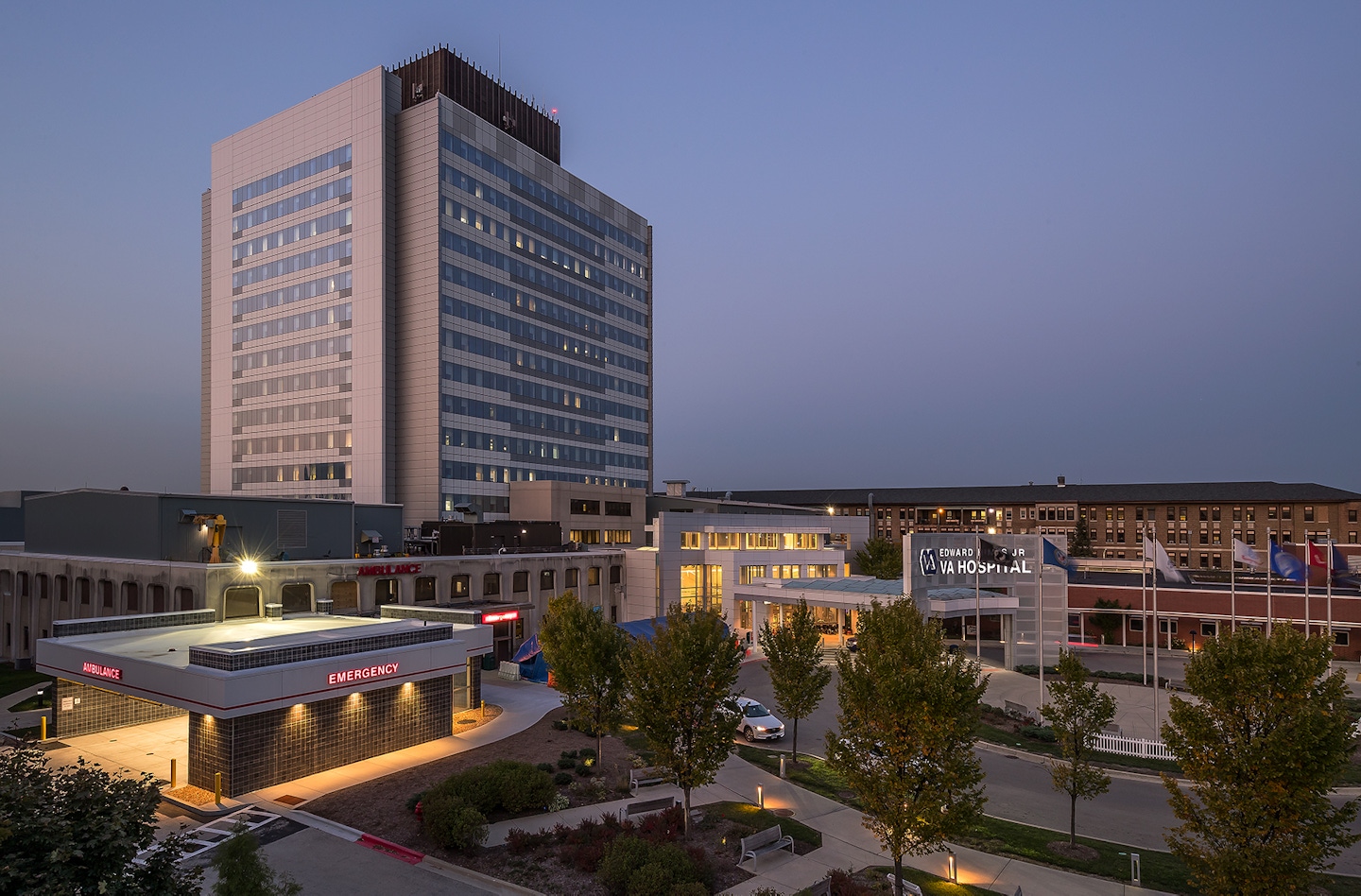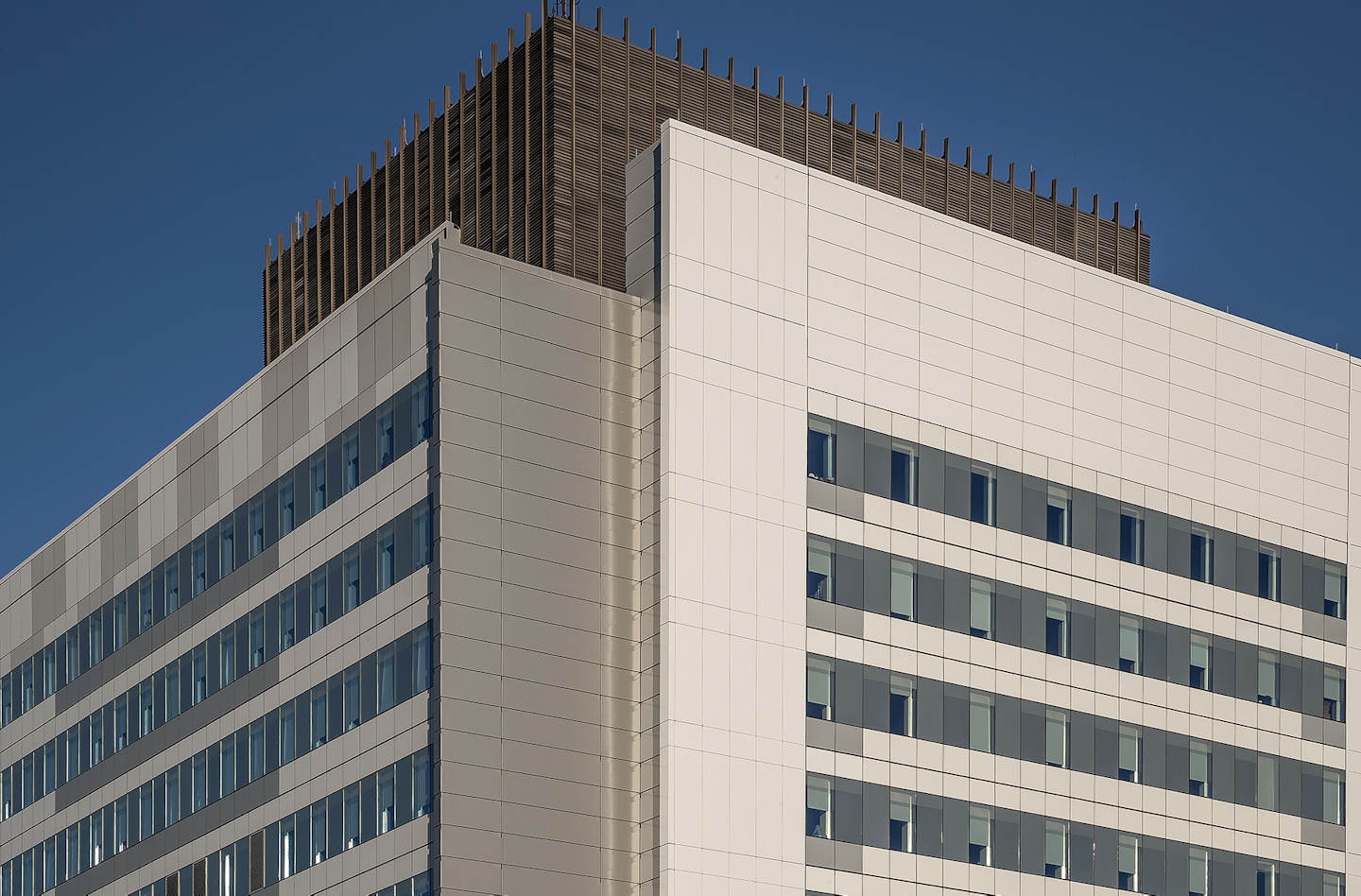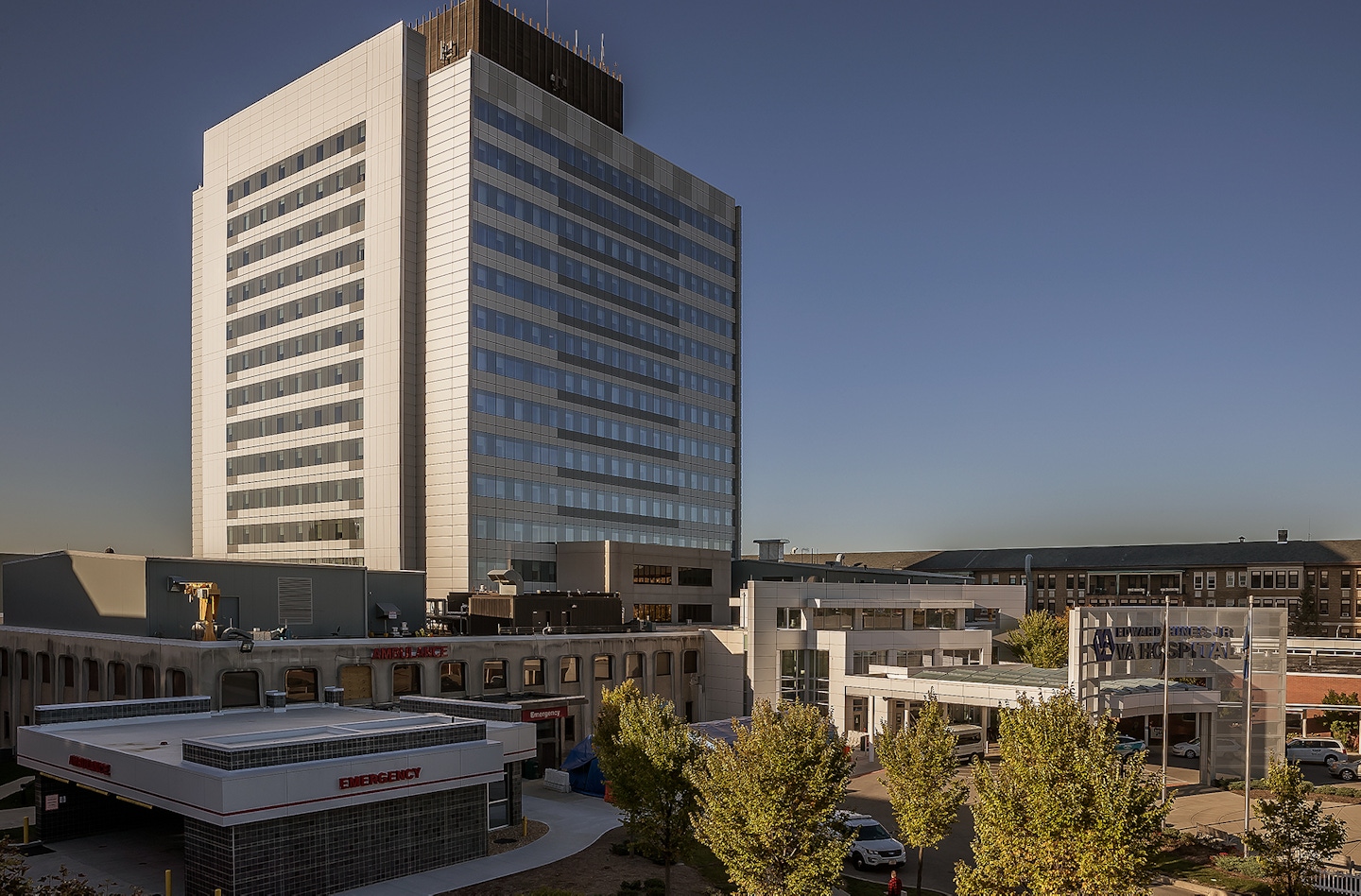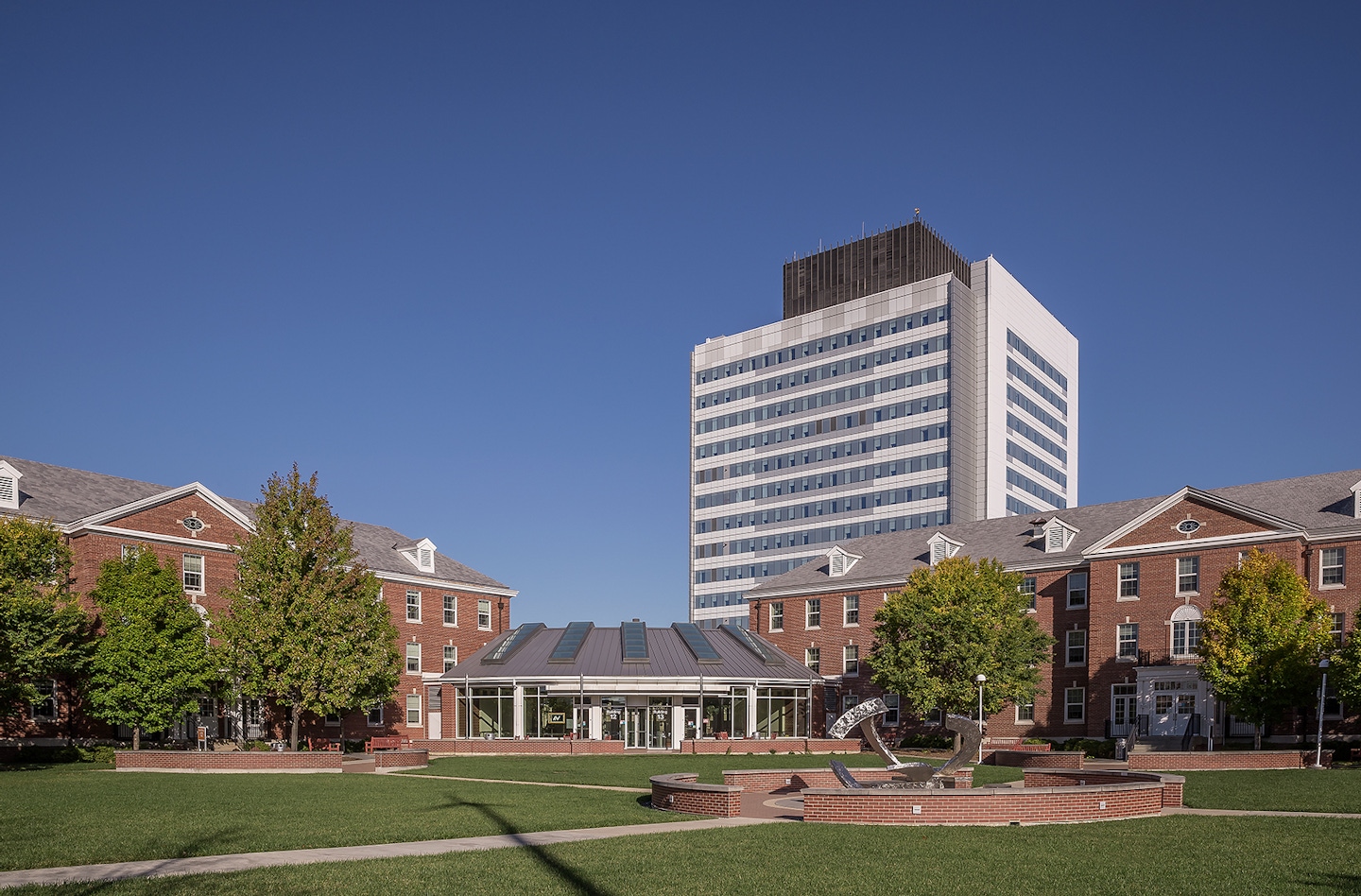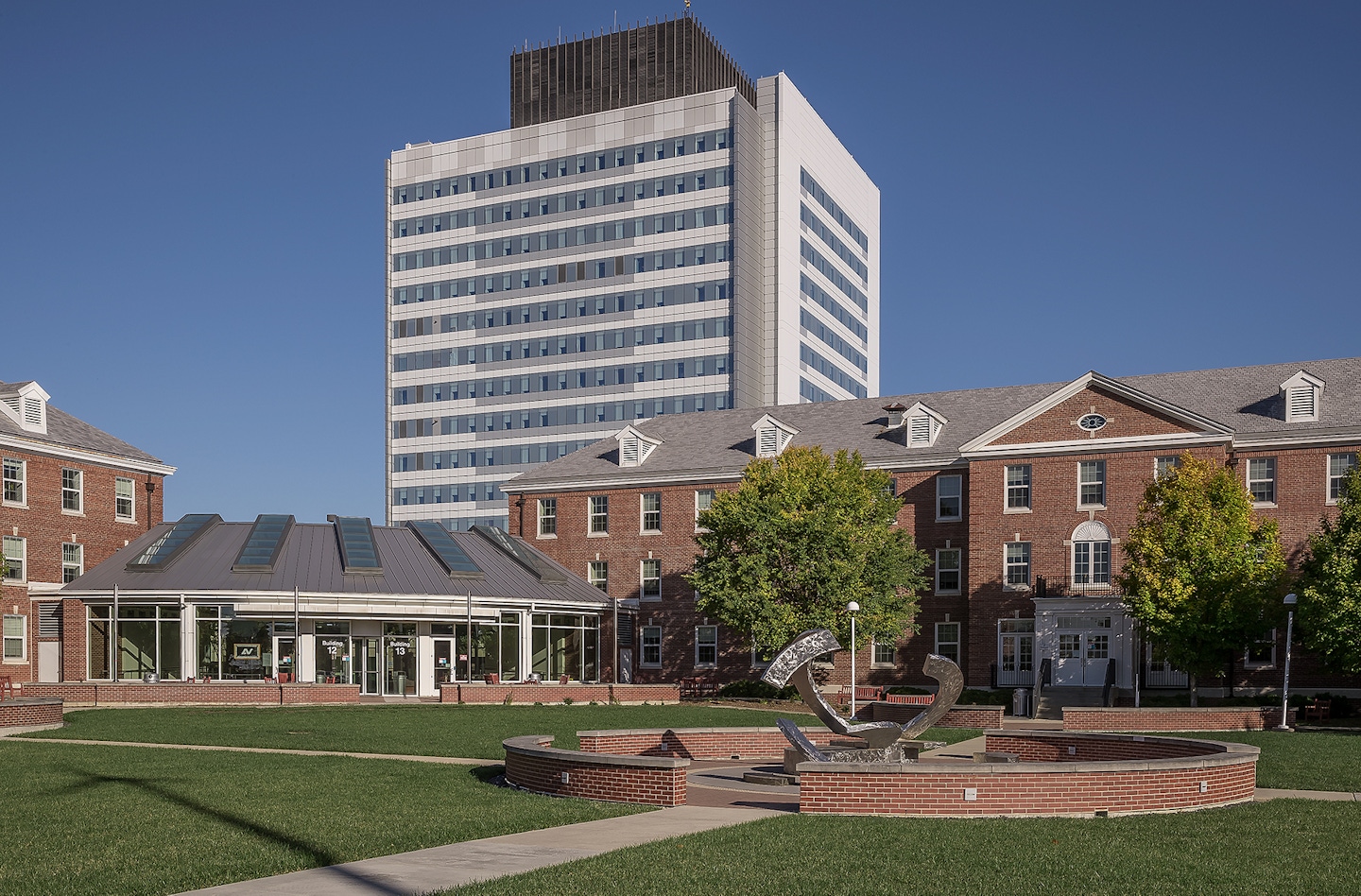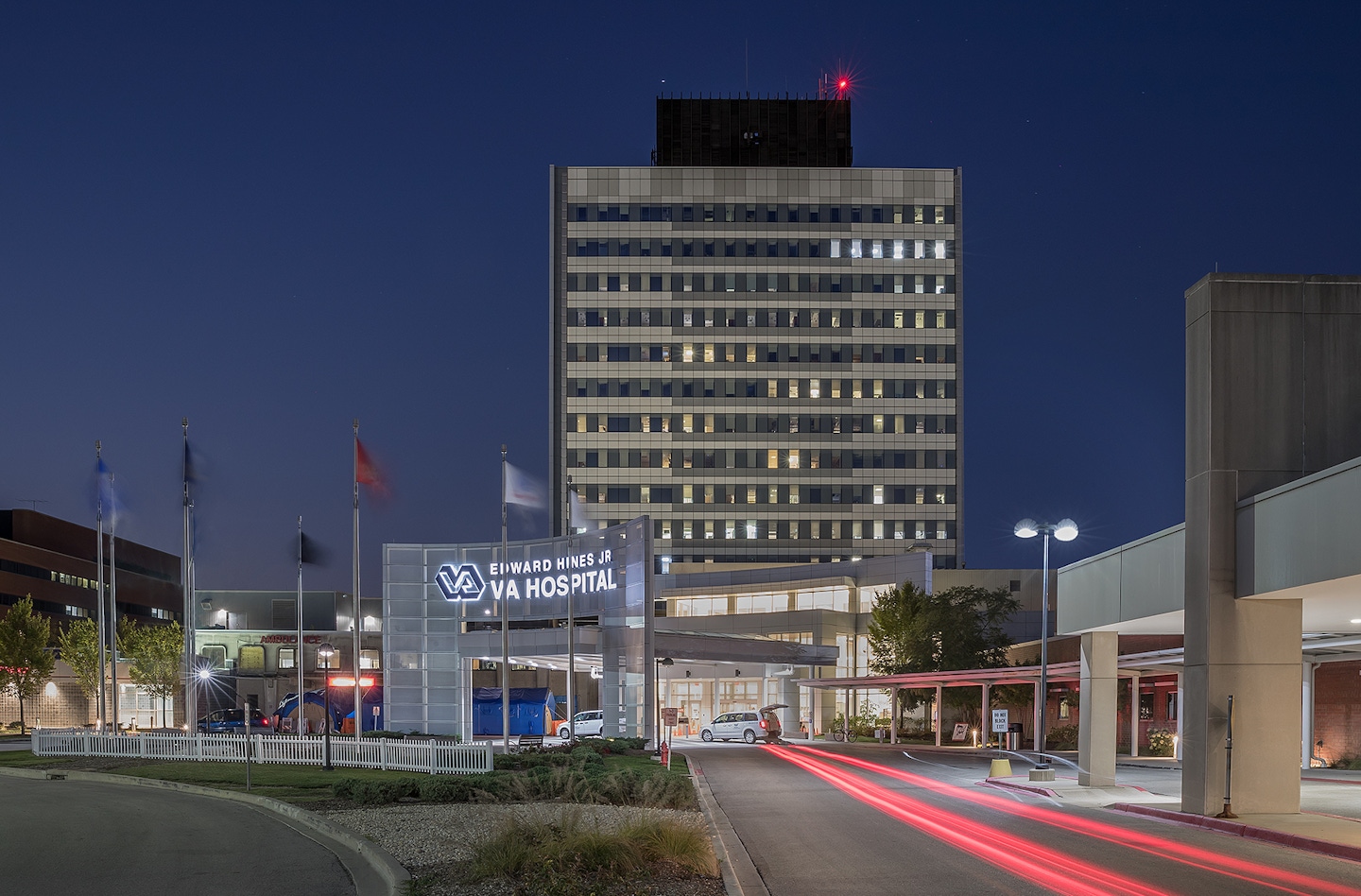For nearly 10 years, Epstein’s architects, interior designers and engineers worked to renovate and modernize the hospital’s campus, resulting in the reshaping of their entire image. These projects have included, among others, additions, facility renovations and roof replacements.
Our most ambitious project was the façade replacement of the main hospital, Building 200, at the heart of the Hines campus. Epstein provided architectural and structural engineering services to replace the existing frontage of the 13-story building.
Epstein was originally tasked to provide Building 200 with a weather tight enclosure. Due to the poor original construction of the building, it was losing a significant amount of energy through the façade. There was no air and water barrier to control leakages into and out of structures. Not only was water getting into the building, air would go right through the exterior façade, making it extremely drafty.
After initial exploratory work, Epstein discovered that the existing façade of Building 200 had structural problems brewing. As such, we recommended that action be taken immediately to stabilize the façade. While emergency stabilization was performed, Epstein created a design that did not take the hospital out of service.
Built in the 1970’s, the façade was transformed from outdated brick and concrete fins to beautiful glass windows. The key design feature was to afford Hines more flexibility to remodel the interior departments of Building 200 in the future. The hospital now has the ability to open the exterior wall by removing demountable shadowbox panels installed during renovation. This gave Hines the ability to transform the existing small punched opening windows into ribbon windows, which are a series of openings set side-by-side to form a continuous band horizontally across a façade. The amount of glass in every space can be more than doubled.
This design strategy was important to Epstein, especially after looking at the affect natural light can have on patient recovery. Studies suggest daylight in healthcare buildings can aid in everything from post-operative care to pain relief.
This new glazing includes frits designed to create irregular patterns across the façade when viewed from the outside. The design solution will mask random openings of the new windows, and the façade will not look pock-marked or odd to visitors.

